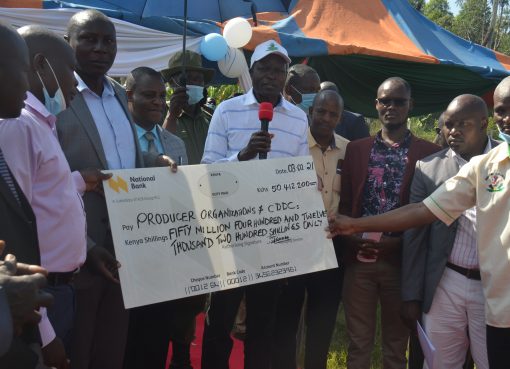As the country continues to reel from the Covid-19 pandemic, the fight against HIV/Aids will suffer as agencies mandated to spearhead efforts to stem infections scale down their operations.
The National Aids Control Council (NACC) has re-organized its offices across the country with the intention of protecting its members of staff and clients against Coronavirus.
The Central Region HIV coordinator Julius Koome in a brief to members of staff across the region says operations of the agency will be affected as it moves to protect them and their clients from Covid-19 pandemic.
Koome says as a Covid-19 prevention measure, NACC Central Region and all county and sub-county focal persons are expected to adopt and enhance alternative communication strategies for HIV coordination.
These strategies will include mainstreaming the use of emails, Whatsapp, occasional calls and tele-conferencing in order to minimise contact and adhere to social distancing as recommended by the Ministry of Health.
The focus on fighting the spread of Covid-19 will impact negatively to spirited efforts aimed at bringing down HIV infections across the region which by July last year was recording four fatalities and eight infections daily.
Most of those affected are women and young persons aged between 15 to 24 years according to a situational report from the office, released mid- July last year.
The grim report indicated that 66,285 people in Murang’a, Nyeri and Kirinyaga counties were living with the virus whose spread was being fueled mainly by sexuality among teenagers, economic vulnerabilities especially among women and the youth, alcohol and substance use among others.
In Murang’a, 30,376 people were living with the devastating virus that causes Aids with a prevalence rate of 4.2 per cent while there were 21,428 cases in Nyeri where prevalence was at 3.7 per cent. Kirinyaga was trailing with 14,481 infections and a prevalence rate of 3.2 per cent with women bearing the blunt of the scourge.
“The prevalence among women is disproportionately high with two in every three people living with HIV in the three counties being women,” he said.
And as the epidemic continued to wreak havoc to families across the region, Koome regretted that condom uptake remained low.
“The 2017 annual condom distribution data from the Kenya Medical Supplies Authority’s (KEMSA) logistical management information systems revealed an average of between 2.7 and 3.1 million condoms. Technically, this yields a regional average of 9 condoms/man/year which is far below the World Health Organization (WHO) recommended 14 condoms/man/year,” said the official.
The coordinator said the education sector was also reeling from the effects of the infections with a number of primary school pupils and secondary school students affected dropping out of school owing to stigma and discrimination.
“Treatment adherence especially among children in schools and colleges is low which in turn leads to increasing cases of illness and mortality rate among the group,” said the NACC official.
In the brief that was handed over to the Central Regional Commissioner Wilfred Nyagwanga and cascaded to all administrators in three counties, Koome said the increase in cases of infection with wide ranging social and economic impact was raising concerns and concerted efforts needed to be taken to tame the ravaging scourge.
He implored heads of ministries, government departments and semi-autonomous state agencies to prioritize and strengthen HIV response within their structures by ensuring formation of functional Aids control units.
“Performance contracting regulations requires all government institutions to form units to address and mitigate the raging negative effect of the HIV epidemic,” he said.
He added that formation of integrated HIV policies and compliance with the HIV Maisha reporting and certification regulations was a must in order to fight the spread of infection.
Other raft of measures designed to bring the infection rate under control include supporting upscale of HIV related services in non-medical settings such as Huduma Centres.
“Ensuring that HIV mitigation measures are factored in public and private infrastructural projects and participation in county multi-sectoral meetings would also complement our efforts to tame the infections,” said Koome.
By Kiamah Wamutitu
Monday, April 14, 2025




